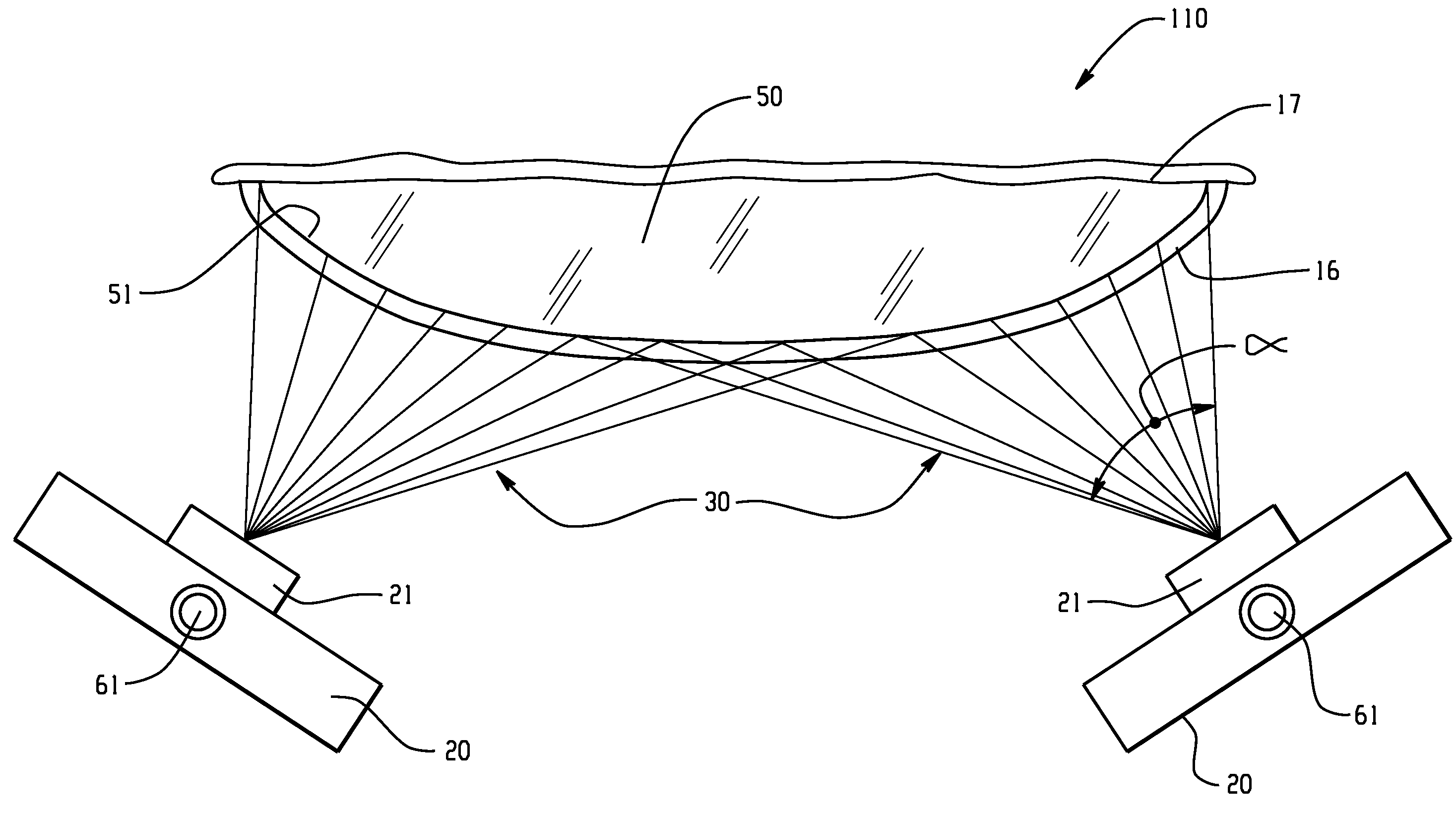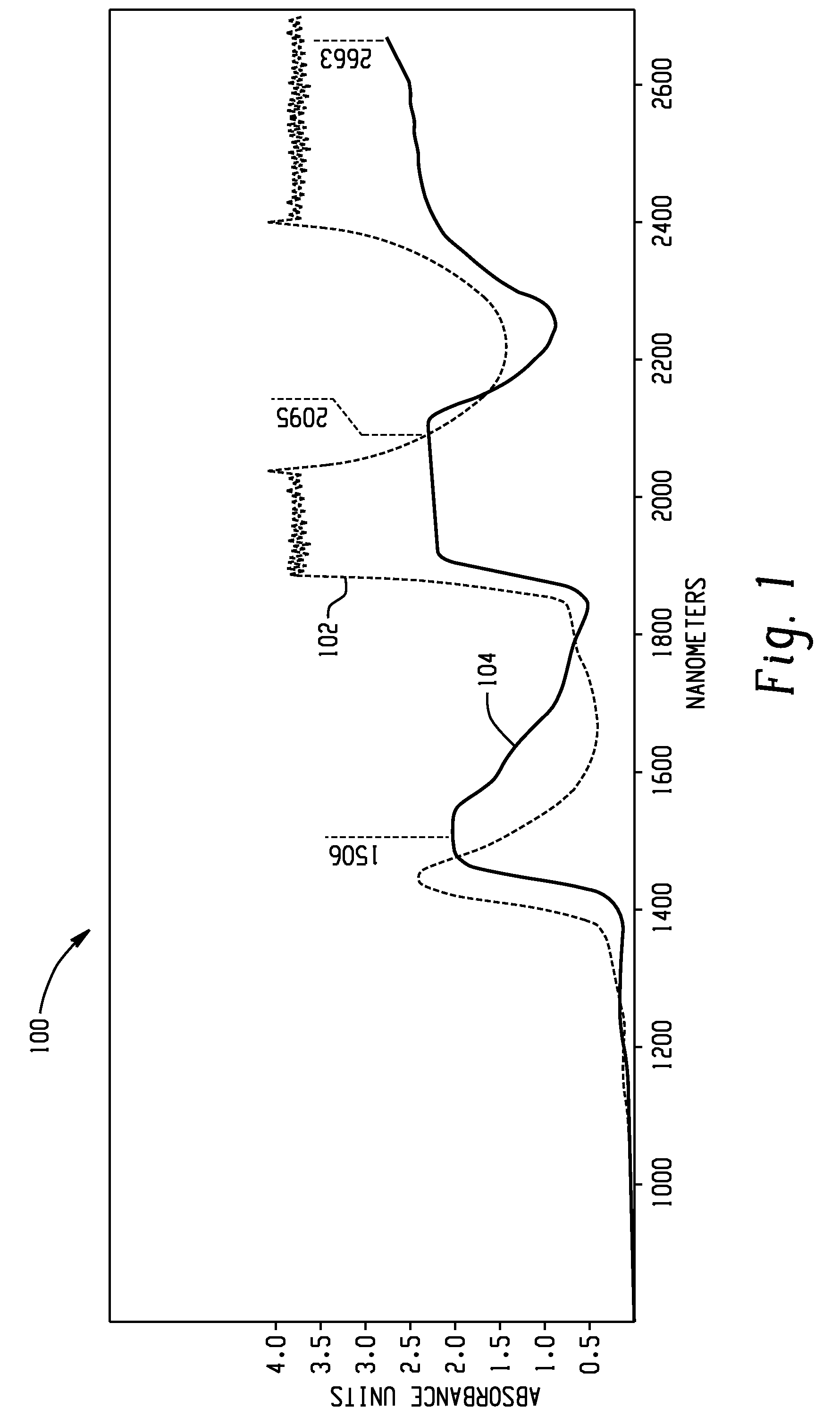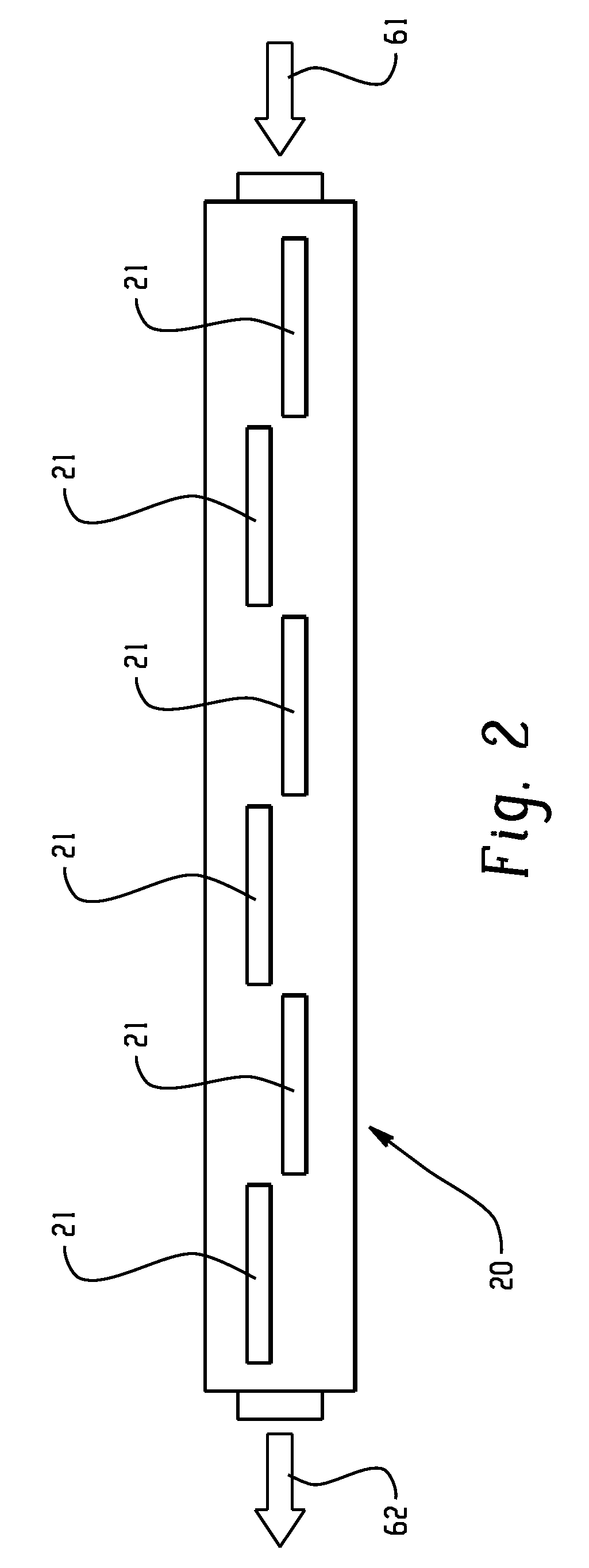Narrowband de-icing and ice release system and method
a narrowband and ice release technology, applied in the direction of cleaning with liquids, furniture, lighting and heating apparatus, etc., can solve the problems of inefficient transfer of heat from the inside surface of the windshield to the windshield glass or other material, the de-icing speed and efficiency of the automotive windshield is not optimized, and the de-icing speed is relatively slow and inefficien
- Summary
- Abstract
- Description
- Claims
- Application Information
AI Technical Summary
Benefits of technology
Problems solved by technology
Method used
Image
Examples
Embodiment Construction
[0060]The present invention provides for a de-icing and ice release system and method incorporating Digital Heat Injection technology (DHI)—the fundamentals of which are detailed in a series of patents and / or patent applications including U.S. Pat. No. 7,425,296; U.S. application Ser. No. 11 / 351,030 (filed Feb. 9, 2006 as a continuation of U.S. Pat. No. 7,425,796); U.S. application Ser. No. 11 / 448,630 (filed Jun. 7, 2006); U.S. application Ser. No. 12 / 135,739 (filed Jun. 9, 2008); U.S. Provisional Application No. 61 / 224,822 (filed Jul. 10, 2009) (now corresponding to U.S. Ser. No. 12 / 834,742, filed Jul. 12, 2010); U.S. Provisional Application No. 61 / 224,765 (filed Jul. 10, 2009) (now corresponding to U.S. Ser. No. 12 / 718,919, filed Mar. 5, 2010); U.S. Provisional Application No. 61 / 231,944 (filed Aug. 6, 2009) (now corresponding to U.S. Ser. No. 12 / 852,311, filed Aug. 6, 2010) and, U.S. Provisional Application No. 61 / 157,799 (filed Mar. 5, 2009) (now corresponding to U.S. Ser. No. 1...
PUM
 Login to View More
Login to View More Abstract
Description
Claims
Application Information
 Login to View More
Login to View More - R&D
- Intellectual Property
- Life Sciences
- Materials
- Tech Scout
- Unparalleled Data Quality
- Higher Quality Content
- 60% Fewer Hallucinations
Browse by: Latest US Patents, China's latest patents, Technical Efficacy Thesaurus, Application Domain, Technology Topic, Popular Technical Reports.
© 2025 PatSnap. All rights reserved.Legal|Privacy policy|Modern Slavery Act Transparency Statement|Sitemap|About US| Contact US: help@patsnap.com



